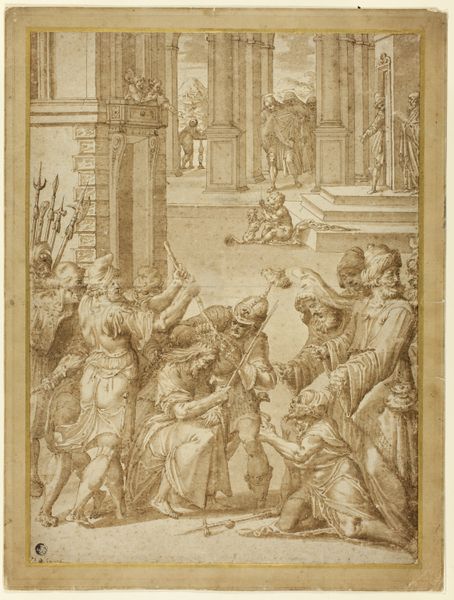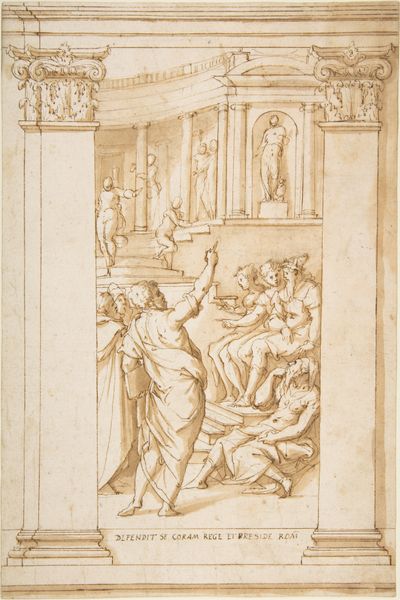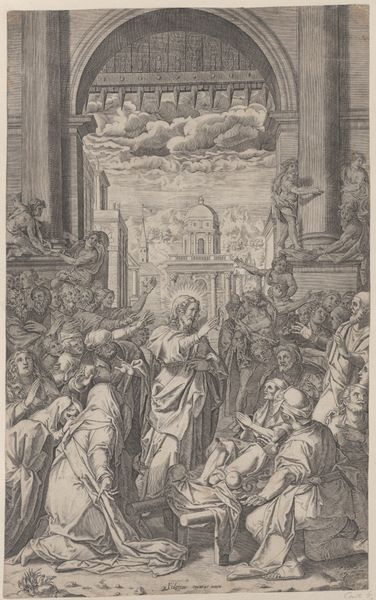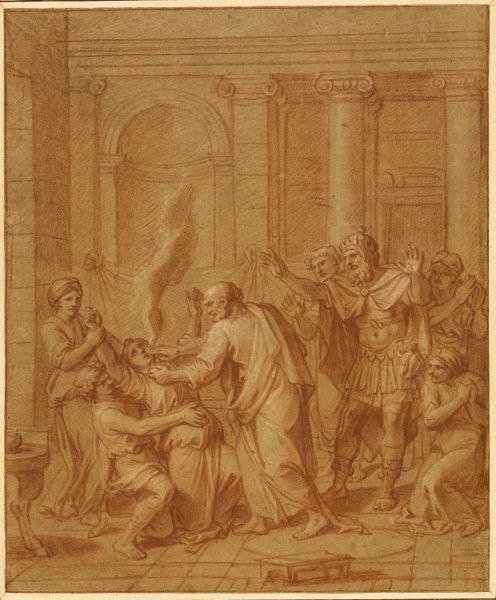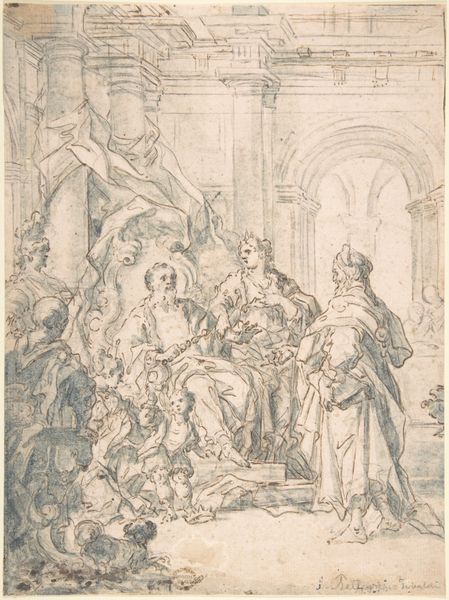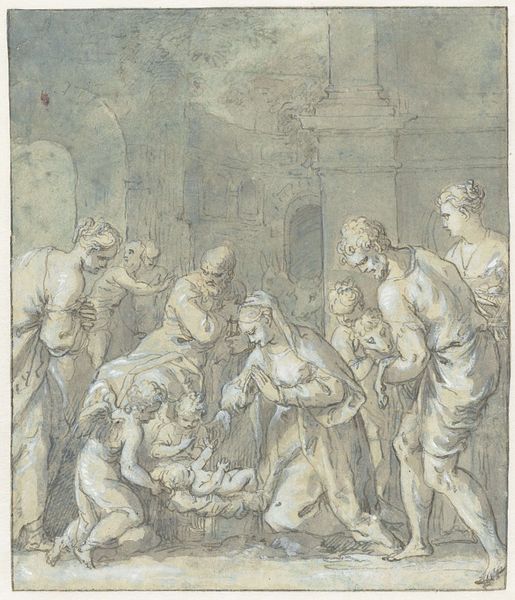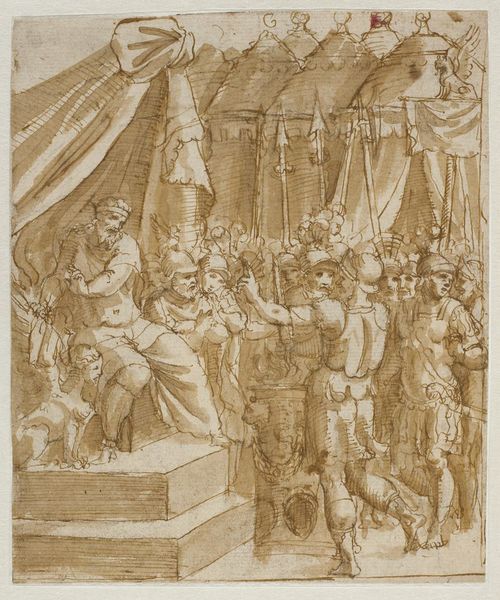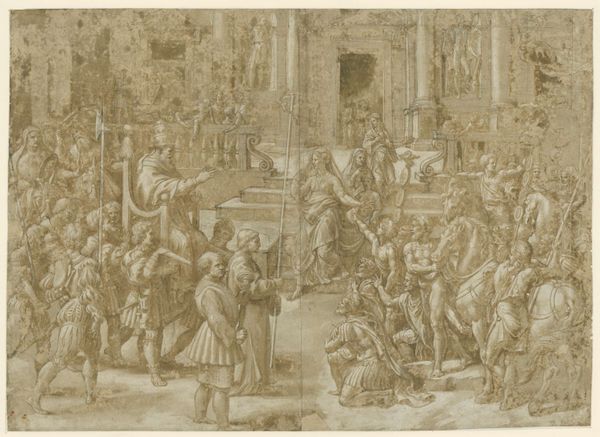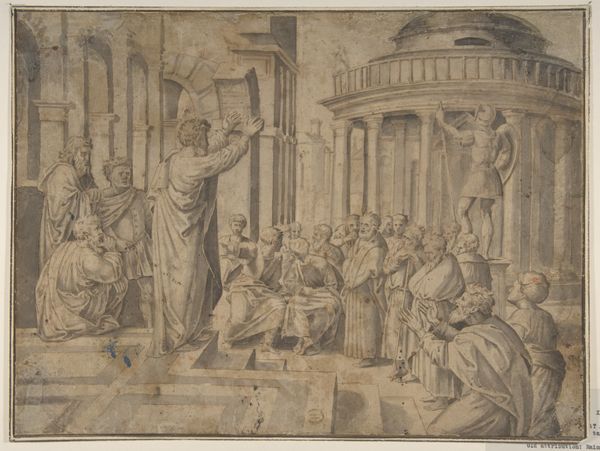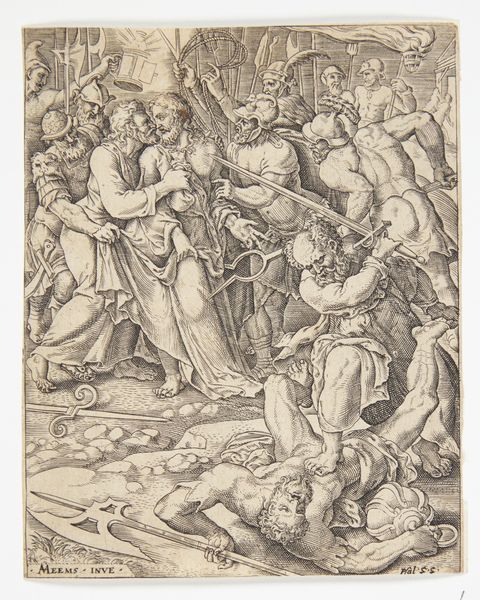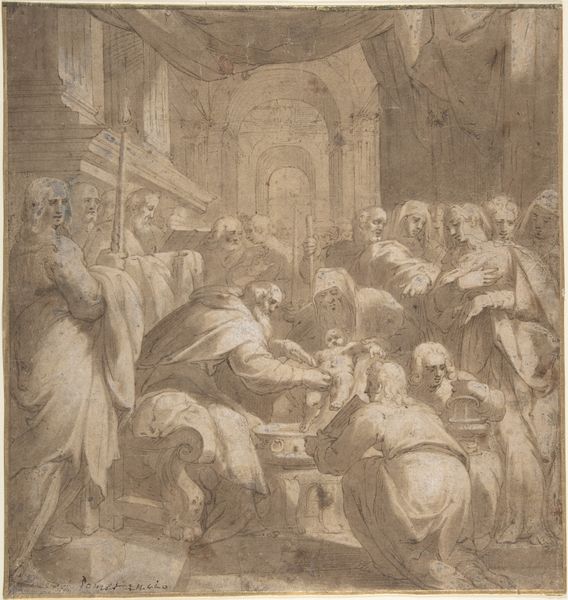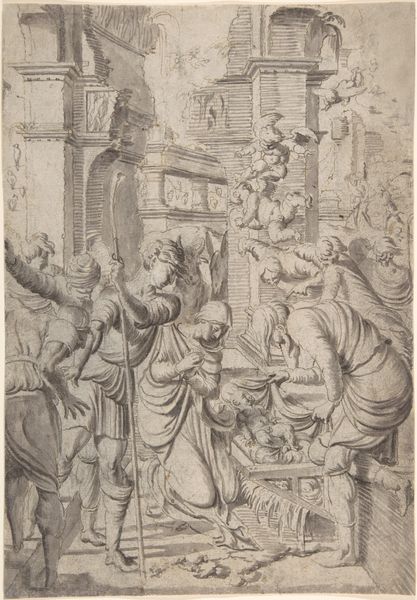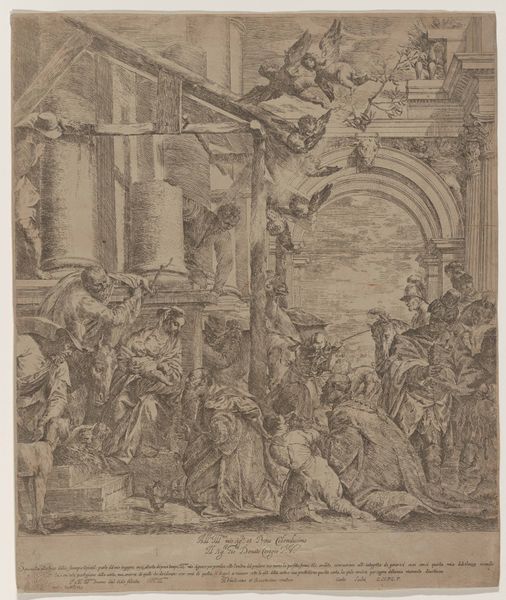
Christ Driving the Money Changers from the Temple 1660 - 1675
0:00
0:00
drawing, tempera, print, pencil
#
drawing
#
narrative-art
#
baroque
#
tempera
# print
#
pencil sketch
#
figuration
#
pencil drawing
#
pencil
#
men
#
line
#
watercolour illustration
#
history-painting
#
academic-art
#
watercolor
#
christ
Dimensions: 10-1/8 x 7-7/8 in. (25.7 x 20 cm)
Copyright: Public Domain
Curator: We’re looking at Matthias Scheits’s "Christ Driving the Money Changers from the Temple," created sometime between 1660 and 1675. It’s currently housed here at the Met. What are your first thoughts? Editor: Mayhem, clearly. A frenzied expulsion captured in monochrome. There’s an incredible tension created by the line work, it almost vibrates. I immediately notice the level of detail in the figures. What medium are we looking at here? Curator: Scheits employed pencil, tempera, and watercolor in this drawing. Observe how the academic and baroque stylistic elements merge to enhance the dramatic narrative. Consider how this piece's materiality evokes the scene's energy. The layered washes and line variations work to create a dynamic visual plane. Editor: Absolutely. Seeing the pencil marks and washes, one thinks about the artist's hand, his labor. Those overturned tables and scattering coins weren't tossed by disembodied spirits. Where was it created and what's its relationship to other artistic output of its time? This would certainly illuminate our reading of it as a social artifact. Curator: Scheits's depiction reflects the prevalent socio-religious sentiments of his time. He likely produced the artwork in Germany or the Netherlands. The Protestant Reformation heavily influenced the period, where reformist ideals intersected with evolving art market dynamics that influenced artistic creation and reception. The detailed craftsmanship contrasts with the upheaval depicted. Editor: Yes, the relationship between the high art technique and its function matters, but also who provided the materials themselves, who paid Scheits for his time? Considering those hands and brushes at work is crucial when thinking about these sacred narratives—who has access, who is excluded? Curator: Undoubtedly, but we can't ignore the formal accomplishments in service of communicating its message. For instance, the diagonal composition forces your eye toward the figure of Christ. Notice how Scheits organizes space and orchestrates the dynamic movements of each figure. The medium itself is a support for expressing deep conviction. Editor: Conviction yes, of course, but let's remember to critically investigate just whose interests this artwork served, both in Scheits’s era and even in ours, today. Curator: A worthy caution.
Comments
No comments
Be the first to comment and join the conversation on the ultimate creative platform.
